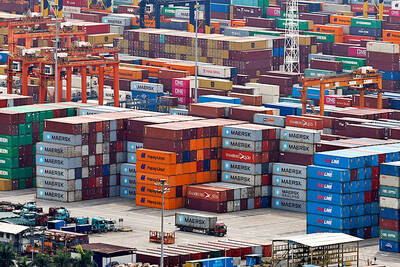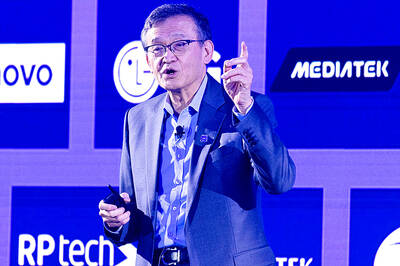If you want to see the finest selection of luxury watches in the world, don't bother going to Switzerland.
Affluent Asian cities are teeming with retailers feeding a growing appetite for luxury timepieces, some of them heavily encrusted with jewels, boasting complex hand-crafted mechanisms -- and worth as much as a mansion.
Asia, with a growing millionaires' club and expanding middle classes, is now the key market in the global luxury watch retail scene.
Industry sources said about half of Switzerland's watch exports totalling more than US$8 billion yearly end up in Asia, with Japan and Hongkong as the top destinations and Singapore not far behind.
Taiwan and Thailand are also key markets, and China is growing fast.
The region has a "strong watch-buying culture" and sophisticated buyers, Sincere Watch executive vice-president Ong Ban said.
"The barometer of how well a [newly launched] watch will do depends on two key markets, Asia and Italy," Ong said. "If it can do well in these two major markets, it will usually do well in other parts of the world."
Sincere Watch is one of Singapore's biggest luxury watch retailers, with 19 outlets in Singapore, Malaysia, Thailand, Indonesia, South Korea and Hong Kong.
"If you want to buy a Swiss watch, you get more choice here than in Switzerland," Ong remarked.
In the last two years, there has been a buying trend in favor of bejewelled and "high complication" watches, retailers said.
They said non-quartz, mechanical watches with features such as the minute repeater and perpetual calendar are especially in demand. It can take up to two years to deliver one handmade watch.
Quartz watches have electronic chips embedded in them, with less craftsmanship involved, making them less attractive to diehard collectors.
Ong said big-faced watches have also been a global hit after becoming popular in Asia. The trendy watches made by firms such as Panerai from Italy have 42mm wide watch faces, compared to the average of 35 millimetres in diameter.
Among Asians, the perennial favourites include Omega, Cartier, Rolex, Patek Philippe, Audemars Piguet and Piaget.
"They are more well-known because of huge advertisement campaigns that give them strong international branding," said Singapore's Cortina Watch founder and chairman, Anthony Lim.
Cortina has nine stores in Asia, including countries such as Myanmar, Hong Kong and Malaysia.
Lim, who is also Singapore's Clock and Watch Trade Association president, said that even in Singapore, one of Asia's smallest countries with a population of 4.2 million, there is a booming niche market.
Touted as Southeast Asia's watch retail hub, Singapore receives about 460 million dollars' worth of Swiss watch exports yearly and is a hotspot for wealthy watch-lovers from neighbouring Indonesia and Malaysia.
Tourists make up close to half of the luxury watch sales in Singapore, retailers said.
Luxury brand prices range from US$600 to six figures.
Lim revealed that Cortina sold more than 10 watches priced above US$170,000 each over the past three years in Singapore.
Retailers said the typical Singaporean collector -- most of them are young professionals and executives -- would spend about US$2,300 to US$6,000 on a watch, and chalk up five to 10 new purchases a year.
The most expensive watch in Cortina is currently a US$460,000 Patek Philippe minute-repeater.
As for Sincere, it has a one-of-a-kind Franck Muller "high complication" watch that costs a cool US$870,000 -- equivalent to the price of five average-sized apartments in the city-state.
To draw rich buyers, Singapore boasts opulent outlets and high service standards, local retailers say. Its infrastructure and positioning as a shopping haven also add to its allure.
However, to compete with the big boys in Asia like Japan and Hongkong, retailers feel Singapore has to develop highly-trained watchmakers who can support an after-sales service industry.
Hong Kong already has a watch manufacturing industry, while Malaysia has started to manufacture parts, making it even more crucial for Singapore to embark on a similar path, according to retailers.

The Eurovision Song Contest has seen a surge in punter interest at the bookmakers, becoming a major betting event, experts said ahead of last night’s giant glamfest in Basel. “Eurovision has quietly become one of the biggest betting events of the year,” said Tomi Huttunen, senior manager of the Online Computer Finland (OCS) betting and casino platform. Betting sites have long been used to gauge which way voters might be leaning ahead of the world’s biggest televised live music event. However, bookmakers highlight a huge increase in engagement in recent years — and this year in particular. “We’ve already passed 2023’s total activity and

Nvidia Corp CEO Jensen Huang (黃仁勳) today announced that his company has selected "Beitou Shilin" in Taipei for its new Taiwan office, called Nvidia Constellation, putting an end to months of speculation. Industry sources have said that the tech giant has been eyeing the Beitou Shilin Science Park as the site of its new overseas headquarters, and speculated that the new headquarters would be built on two plots of land designated as "T17" and "T18," which span 3.89 hectares in the park. "I think it's time for us to reveal one of the largest products we've ever built," Huang said near the

China yesterday announced anti-dumping duties as high as 74.9 percent on imports of polyoxymethylene (POM) copolymers, a type of engineering plastic, from Taiwan, the US, the EU and Japan. The Chinese Ministry of Commerce’s findings conclude a probe launched in May last year, shortly after the US sharply increased tariffs on Chinese electric vehicles, computer chips and other imports. POM copolymers can partially replace metals such as copper and zinc, and have various applications, including in auto parts, electronics and medical equipment, the Chinese ministry has said. In January, it said initial investigations had determined that dumping was taking place, and implemented preliminary

Intel Corp yesterday reinforced its determination to strengthen its partnerships with Taiwan’s ecosystem partners including original-electronic-manufacturing (OEM) companies such as Hon Hai Precision Industry Co (鴻海精密) and chipmaker United Microelectronics Corp (UMC, 聯電). “Tonight marks a new beginning. We renew our new partnership with Taiwan ecosystem,” Intel new chief executive officer Tan Lip-bu (陳立武) said at a dinner with representatives from the company’s local partners, celebrating the 40th anniversary of the US chip giant’s presence in Taiwan. Tan took the reins at Intel six weeks ago aiming to reform the chipmaker and revive its past glory. This is the first time Tan